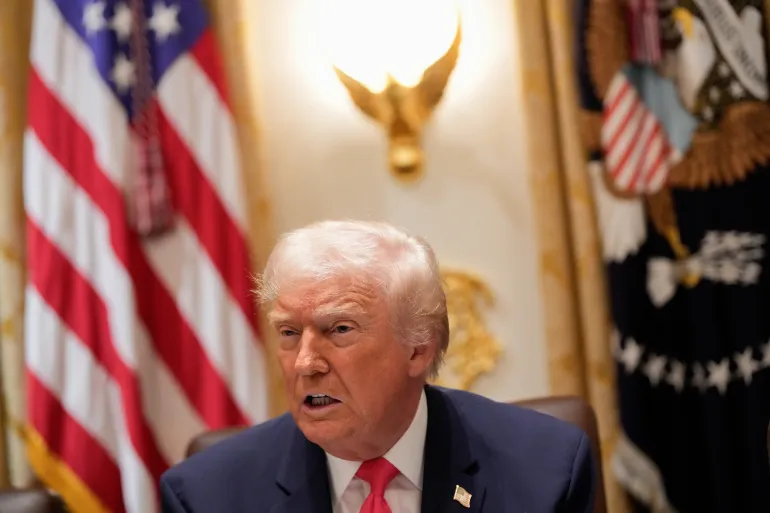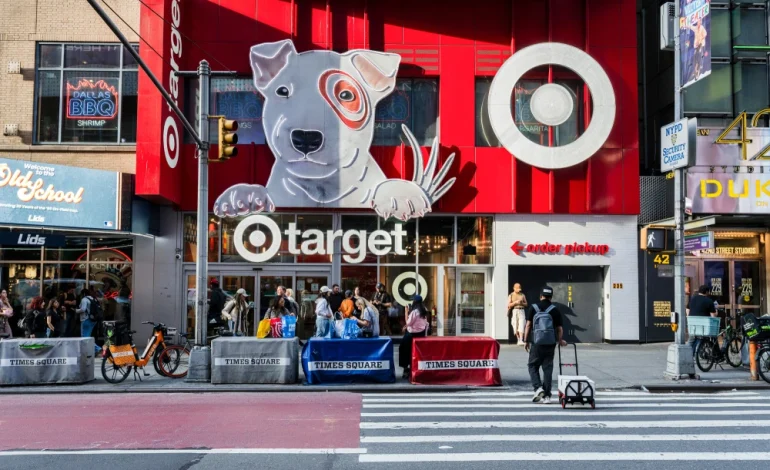Target Corporation has lowered its full-year sales outlook after reporting a steeper-than-expected drop in quarterly revenue, signaling continued difficulties in navigating a volatile retail environment.
The company attributed its revised forecast to a “highly challenging environment,” including weak consumer sentiment, trade-related pressures, and backlash from recent strategic shifts.
Comparable sales for the quarter ending May 3 declined 3.8% year-over-year, driven by a 2.4% drop in store traffic and a 1.4% decline in average transaction size. While digital sales grew by 4.7%, supported by a 36% surge in same-day delivery through its Target Circle 360 program, they were not enough to offset losses in in-store performance, which fell by 5.7%.
In light of these results, Target now expects a “low-single digit decline” in annual sales, a reversal from its previous projection of modest growth. The company’s stock fell more than 6% in premarket trading and is down nearly 28% year-to-date.
“We’re not satisfied with current performance,” said CEO Brian Cornell in a statement.
He emphasized that the company remains focused on improving its operations and customer experience, adding that an internal “acceleration office” has been created to help drive faster execution of its strategic initiatives. The office will be led by current Chief Operating Officer Michael Fiddelke, formerly the company’s Chief Financial Officer.
Target’s revised guidance comes as many major retailers grapple with economic headwinds, including consumer caution in the face of inflation and import tariffs. Unlike Walmart and Home Depot, which reaffirmed their outlooks this week despite ongoing challenges, Target’s update reflects its heightened sensitivity to discretionary spending, especially in categories like electronics and home goods.
Tariffs remain a key concern for retailers, with President Donald Trump recently criticizing Walmart for warning about price hikes. Target has so far resisted broad price increases, with Cornell calling them a “last resort.” Instead, the company is leveraging a variety of strategies to absorb additional costs. These include increasing domestic sourcing—currently about half of Target’s product assortment is US-made—reducing reliance on Chinese imports, renegotiating vendor contracts, and altering product offerings.
Rick Gomez, Target’s Chief Commercial Officer, stated that the company is on track to cut its exposure to Chinese imports to 25%, down from 60% in 2017. He also highlighted the company’s commitment to maintaining low prices in its popular Bullseye’s Playground section, which features items priced at $1, $3, and $5.
Target is also contending with fallout from its decision earlier this year to scale back diversity, equity, and inclusion (DEI) initiatives. The shift drew criticism from shoppers who had previously supported the retailer for its inclusivity, prompting some calls for boycotts. On an earnings call, Cornell acknowledged that the backlash has had an impact on sales, though he did not quantify it.
Adding to the internal shake-up, the company announced the departures of Chief Legal and Compliance Officer Amy Tu and Chief Strategy and Growth Officer Christina Hennington.
Despite the revenue decline, Target reported a net income increase of $62 million from the previous year, totaling $1.04 billion for the quarter. However, investor sentiment remains cautious amid broader concerns about consumer spending trends and the uncertain trajectory of US trade policy.
With input from NBC News, the New York Times, and Business Insider.










The latest news in your social feeds
Subscribe to our social media platforms to stay tuned